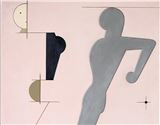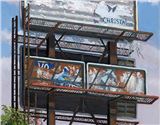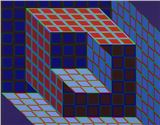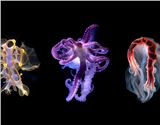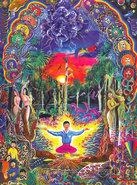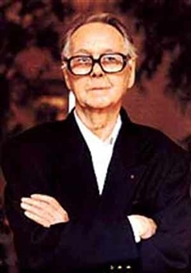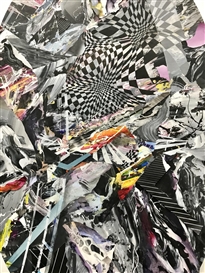The Unexpected Influence of Victor Vasarely’s Optical Illusions
From Budapest to California, Vasarely’s Op art legacy inspires a new wave of psychedelic abstraction and spatial experimentation
Michael Pearce / MutualArt
Jul 29, 2025
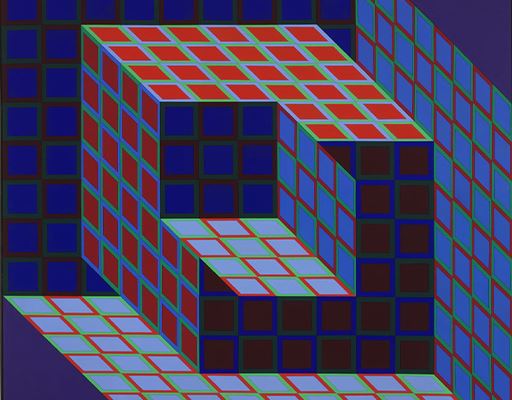
An unusual museum balances on a complicated swoop of a busy corner of imperial Budapest dressed with stacked ranks of aluminum crowd-control handrails. It is within a short riverside taxi drive from the city center over the Árpád Bridge connecting northern Buda to Pest across the green and murk of the sewer scented Danube. It is the Victor Vasarely Museum, established to preserve the memory of Hungary’s most important 20th century artist, who is internationally famed as the father of Optical art.
Victor Vasarely, Mora (Oeuvre Profonde), 1954-1960, metal, plexiglass and glass, silk screen, 80 x 86.2 x 8 cm, Vasarely Museum, Budapest
After a necessary introduction to the artist’s early and conventional design work, duly paying homage to his origins, the curators have installed some of his memorable, if unphotographable layered plexiglass abstractions, like Mora, a thick slab of transparent wonder with black lines clipped into circular forms silk-screened onto the transparent surfaces, the overlapping shapes shifting and wobbling in and out of three-dimensional space, creating an illusion of almost spherical depth from rigid linearity. They break the conventional boundaries of flatness, and always move with the viewer’s position. On the wall nearby hangs Tlinko-F, one of the most unpleasantly jarring of Vasarely’s black and white paintings. Defying calm observation with a shimmering grid of squares and diamonds which vibrate against each other like the crystalline edges of a migraine aura, it can only be perceived as either an impossible horror of pain and discomfort or as a thrilling delight celebrating Vasarely’s success in locating the masochistic edge of sensory pleasure. For it is impossible to enjoy the painting within the usual sensual scope of the experience associated with art, as gazing at the surface for a long period is unpleasantly painful and violently resisted by the instinct for self-preservation. Other black and white works, like Norma, cause less suffering, although slippery bands of overlapping circles and squares shift between order and motion – but these are clever challenges that require viewers to make sense of the structures of positive and negative space, which jump back and forth between foreground and background – at first perceiving the black shapes in front, then the white, then abruptly shifting back to black and then the reverse, making comprehension of the geometry an entertaining task.
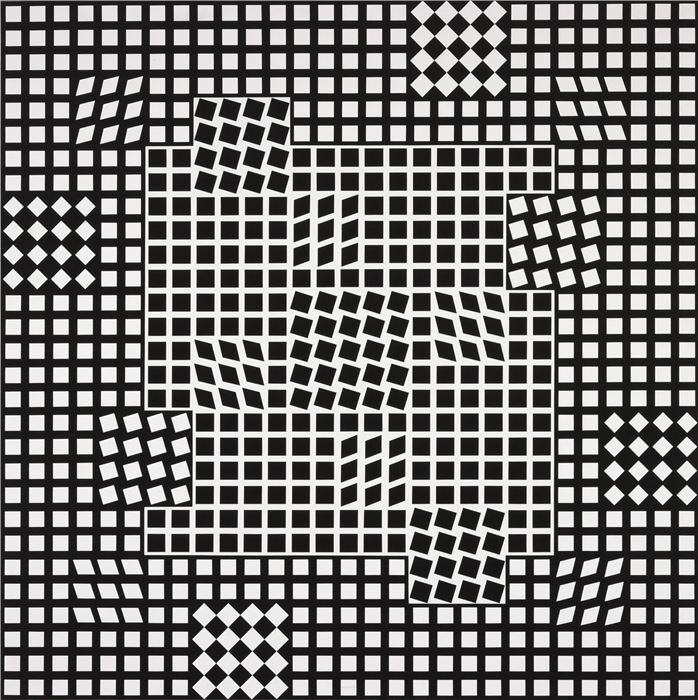 Victor Vasarely, Tlinko-F, acrylic on canvas, 1956-1962, 145 x 145 cm
Victor Vasarely, Tlinko-F, acrylic on canvas, 1956-1962, 145 x 145 cm
Upstairs, the museum spreads open to a bright and glorious array of the deliciously colorful paintings of his gestalt period, which seduce visitors like a rich buffet of delectable treats, equally inviting as a candied store window dressed in a Milanese city street, all grids of glazed treats and shimmering transparencies, cakes, and candies, and patterned fields of crystallized dried fruit attracting sensualists to enjoy the pleasures of this impressive work. And these are not diminutive feasts for the tempted eye. Some of Vasarely’s colorful abstract explorations of bent space are solid pleasures on grand scale, dominating the spaces of the museum. At first, he addressed issues similar to the jumping perspective of the black and white pieces with the added complication of saturated colors, like Kotzka, a jarring image of gridded squares in light and dark hues of chromatic violet blues and scarlet reds with green edged squares forming the illusion of an oblong cube which slips unstably back and forth between depth and projection, or Quivar, a perspective jamming grid of sunshine and mustard yellow and night-time and cerulean blue squares and parallelograms arranged in rising and falling cubes and blocks shape-shifting as receding and opening lights and darks.
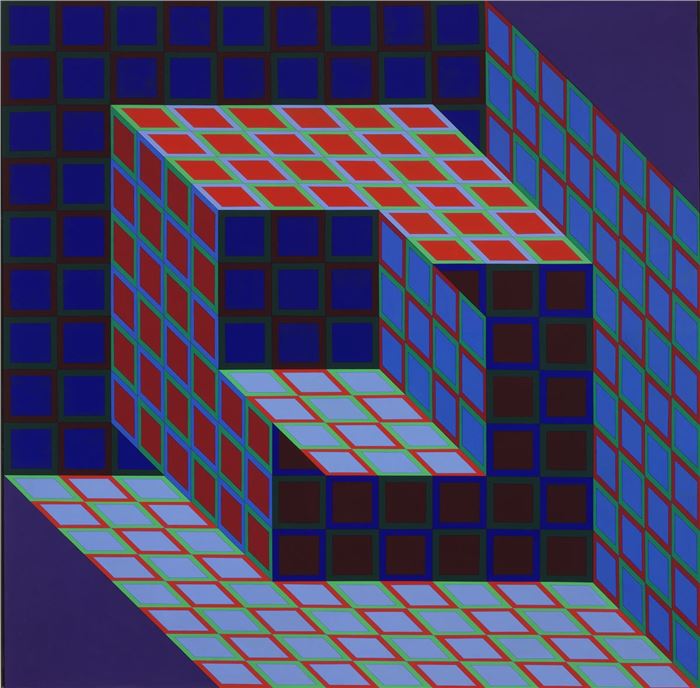 Victor Vasarely, Kotzka, acrylic on canvas, 130 x 130 cm, 1973-76
Victor Vasarely, Kotzka, acrylic on canvas, 130 x 130 cm, 1973-76
By the 1980s Vasarely had begun a group he titled his Universal Expansive Regressive Structures, finding a rich balance between depth and color – still playing with receding and progressing space, but with a new harmony of patterned surfaces and value that gave the balanced compositions a pleasant spatial ambiguity less jarring than the headache inducing edginess of the earlier works. He returned to a simple monochrome palette of Prussian blue and white for the mandala Keek, and managed to find the illusion of a pleasing swell and an organic stretch that expanded the flat canvas with a pleasant projection of a round peaked pyramid pushing forward into the space.
Op art was always abstract, and Vasarely often explored the limits of the eye’s capacity to interpret two-dimensional imagery, creating vibrating paintings that shimmered and wobbled in and out of illusory depth despite the flatness of their surface. It was this focus on eye-testing challenges which led uninitiated observers to lump Op art together with the psychedelia which largely arrived after it in the 1960s, although the relationship between the two was entirely superficial and wholly dependent upon the artificial similarity between the bending grids and contrasts that appear in both. But psychedelic art can only be inspired by the aesthetic of altered states caused by hallucinogens, not by the careful analysis of geometric shapes, contrasting colors and abstraction. Vasarely’s art is voluptuous, but he was obsessed with the limits of formal composition, not with the extravagant and uncontrollable chaos of overwhelming visions.
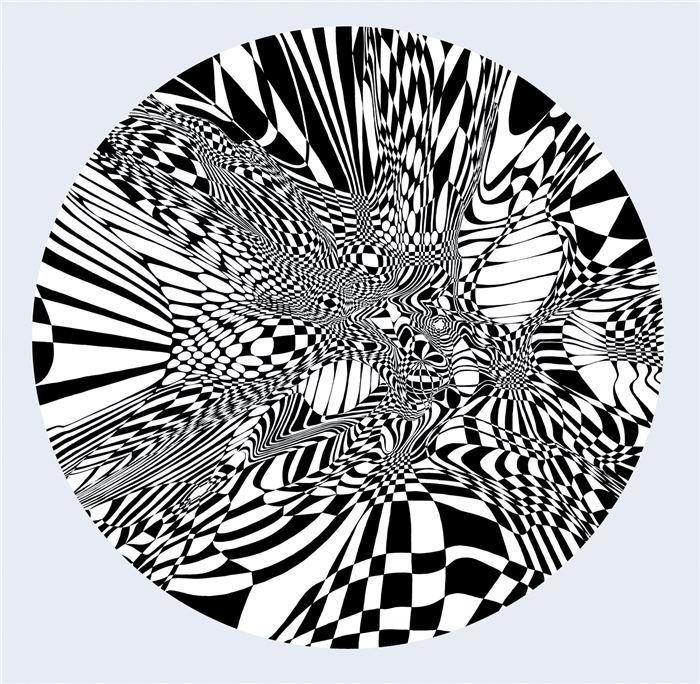 Oliver Vernon, Mutineer, acrylic on canvas, 48 tondo, 2009
Oliver Vernon, Mutineer, acrylic on canvas, 48 tondo, 2009
Nevertheless, although his work was thousands of miles removed from the Brotherhood’s orange sunshine and the Owsley acid tests of the San Francisco and Laguna scenes, and culturally distanced from the hippy movement by the white walls of square galleries, a hundred years after Vasarely’s birth the potential of the three-dimensionality of his controlled geometric operations is being re-reconsidered by a rising generation of artists self-confessedly influenced by a psychedelic aesthetic giving abstraction somewhere to go from the flatness of the mid-twentieth century. A community of extraordinary painters has emerged in the redwood forest of the Sierra mountains around Nevada City, California. Gathered by curator Brian Chambers, their abstraction is three dimensional and brightly colored, and unrestrained by the confines of geometry that limited Vasarely.
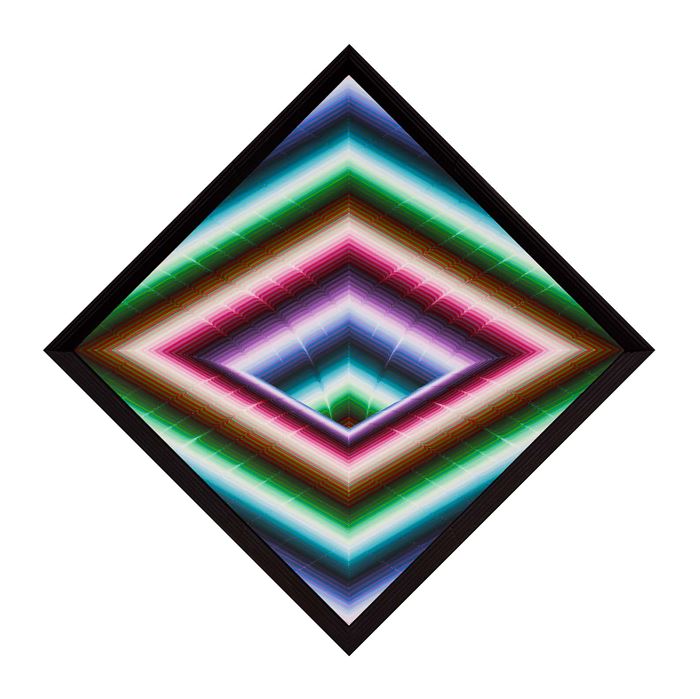 Colin Prahl, Gradient Descent, acrylic on wood, 24 x 24, 2024
Colin Prahl, Gradient Descent, acrylic on wood, 24 x 24, 2024
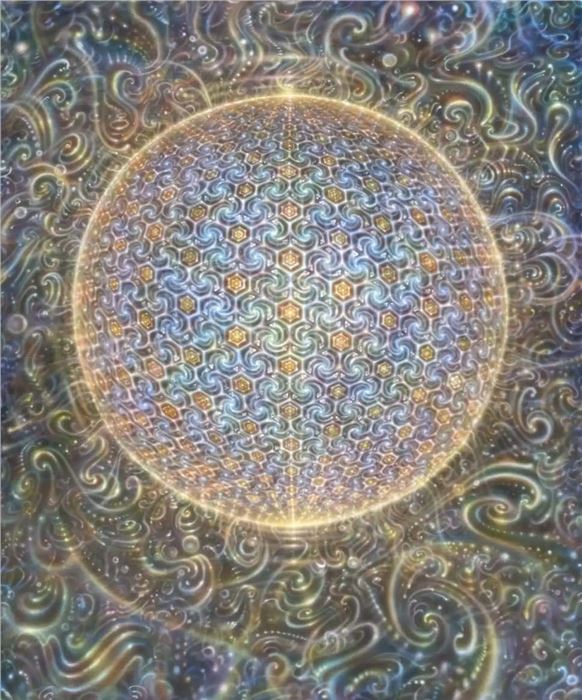
Colin Prahl, Rotational Symmetry, acrylic on canvas, 72 x 60, 2022
They have taken the tight organization of Vasarely’s optical art and pushed it toward a new, fluid form of abstraction with a broad dash of the acid aesthetic he rejected in his lifetime. The debt is clear in Oliver Vernon’s Mutineer, which uses Vasarely’s black and white distortions in an organic tondo composition, bending and fluctuating with the movement of a hallucinogenic experience. It is present again in Colin Prahl’s Gradient Descent, which is a sudden fall into a wormhole of impossible spatial depth painted in an acid palette and pushed still further from Vasarely’s disciplined hard edges into gentle softness in his Rotational Symmetry.
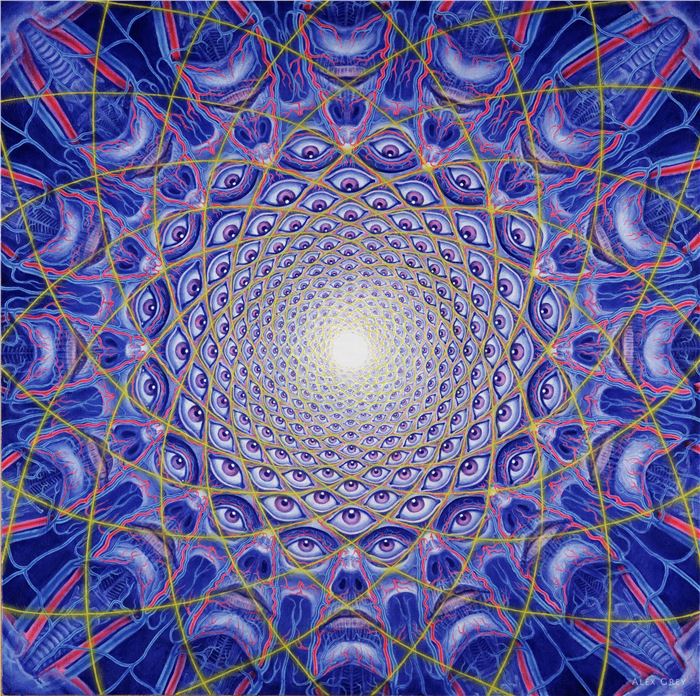 Alex Grey, Collective Vision, oil on linen, 38 x 38, 1995
Alex Grey, Collective Vision, oil on linen, 38 x 38, 1995
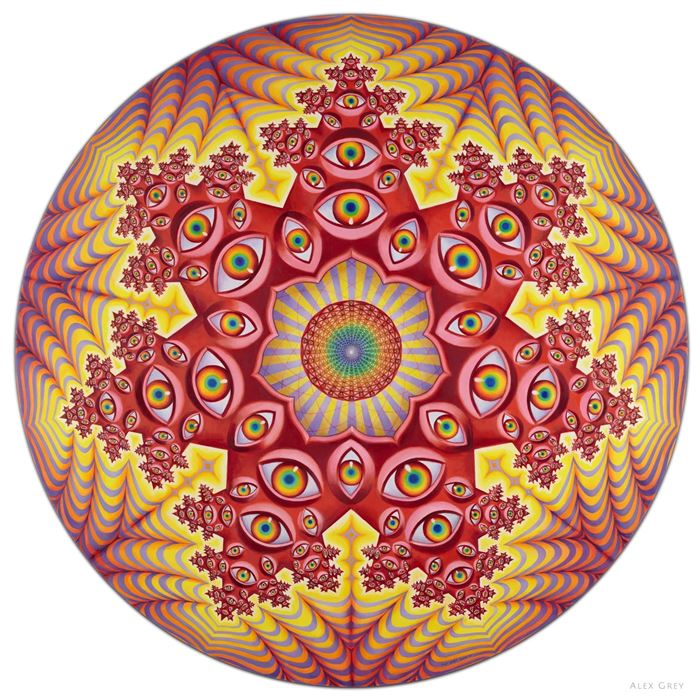 Alex Grey, Vision Crystal Tondo, oil on wood, 48 tondo, 2015
Alex Grey, Vision Crystal Tondo, oil on wood, 48 tondo, 2015
Alex Grey’s Collective Vision takes the faceted expansions of Vasarely and develops them into faces and a multiplicity of eyes radiating toward (or from) a central brightness, evolving toward figuration, and in his Vision Crystal Tondo, which uses the expanded geometry of fractals to develop the composition while also recognizing the significance of Indian and Tibetan meditative mandalas that preceded Vasarely by centuries, and doubtlessly inspired him in form if not devotion, using the hypnotic fascination of radiant geometry as a path to mystical unity with the one mind.
For more on auctions, exhibitions, and current trends, visit our Magazine Page

